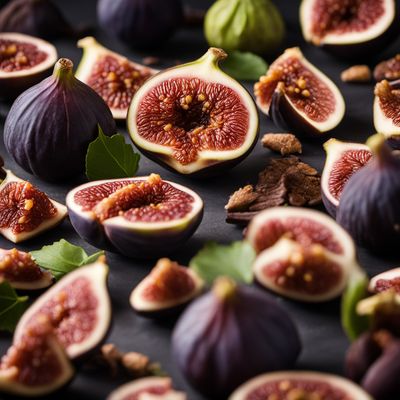
Ingredient
Rosemary flavour
The Aromatic Herb
Rosemary is an evergreen herb with needle-like leaves that are characterized by their strong aroma and a slightly bitter, woody taste. It has a fine texture and a dark green color. This versatile herb is commonly used in Mediterranean and Italian cuisines, where it imparts a unique flavor to roasted meats, stews, soups, and marinades.
Origins and history
Rosemary has a rich history dating back to ancient times. It was highly regarded by the Greeks and Romans, who believed it had medicinal properties and used it in religious ceremonies. Rosemary has been associated with remembrance and fidelity throughout history and is often used in weddings and funerals. It is native to the Mediterranean region but is now cultivated worldwide.
Nutritional information
Rosemary is a good source of antioxidants and essential minerals like iron and calcium. It also contains compounds that may have anti-inflammatory and antimicrobial properties. Incorporating rosemary flavor into your dishes can add depth of flavor and potential health benefits.
Allergens
There are no known allergens associated with rosemary flavor.
How to select
When selecting fresh rosemary, look for vibrant green leaves that are free from browning or wilting. The leaves should be firm and fragrant. Avoid any rosemary with yellow or brown leaves, as they indicate age or poor quality. Dried rosemary should be stored in a cool, dark place in an airtight container to maintain its flavor and aroma.
Storage recommendations
To store fresh rosemary, wrap it in a damp paper towel and place it in a plastic bag or airtight container. Store it in the refrigerator's crisper drawer, where it can stay fresh for up to two weeks. Dried rosemary should be stored in a cool, dark place in an airtight container to maintain its flavor and aroma.
How to produce
Rosemary can be easily grown in home gardens or containers. It thrives in well-drained soil and requires full sun. Regular pruning will help promote bushier growth and ensure a steady supply of fresh leaves. Rosemary can also be propagated from cuttings.
Preparation tips
Rosemary flavor can be used in a variety of dishes. It pairs well with roasted meats, such as lamb, chicken, and pork. It can also be added to stews, soups, marinades, and sauces to enhance their flavor. Rosemary-infused olive oil is a popular condiment that can be drizzled over vegetables, bread, or used as a dipping sauce.
Substitutions
Thyme, oregano, and marjoram can be used as substitutes for rosemary flavor. While they have slightly different flavor profiles, they can provide a similar aromatic touch to dishes.
Culinary uses
Rosemary flavor is commonly used in Mediterranean and Italian cuisines. It is often added to roasted meats, stews, soups, and marinades. It can also be used to flavor bread, potatoes, and vegetables.
Availability
Rosemary flavor is commonly available in grocery stores, supermarkets, and specialty markets. It is also widely cultivated in home gardens.
More ingredients from this category » Browse all

Cappuccino flavour
Indulge in the Richness of Cappuccino Flavor

Cream brulee flavour
"Indulge in the Irresistible Delights of Cream Brulee"

Cereals flavour
The Essence of Grain

Wild berry flavour
Bursting with Nature's Delight: Exploring the Wild Berry Flavor

Coconut flavour
The Tropical Essence: Exploring Coconut Flavour

Truffle flavour
The Essence of Earthly Delight

Walnut flavour
Nutty Elegance

Quark flavour
The Creamy Delight: Exploring the Flavors of Quark

Figs dried flavour
The Sweet Essence of Dried Figs

Coffee flavour
The Essence of Coffee

Raffaello flavour
The Delicate Bliss: Raffaello Flavour

Malaga / raisins flavour
The Sweet Essence of Sun-Drenched Grapes